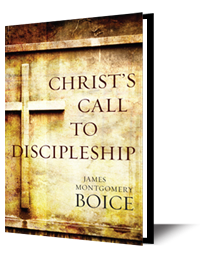The Death of Jesus Christ - Part Four
Theme: The miracles of Calvary.
This week’s lesson shows us proof that Jesus was the Son of God.
SCRIPTURE
Matthew 27:51-53
And behold, the curtain of the temple was torn in two, from top to bottom. And the earth shook, and the rocks were split. The tombs also were opened. And many bodies of the saints who had fallen asleep were raised, and coming out of the tombs after his resurrection they went into the holy city and appeared to many.
LESSON
The third miracle was the earthquake that split the rocks and broke open many of the tombs. Earthquakes themselves are not miraculous, but the timing of this one was. It was at the very moment when Jesus died. Moreover, it was the prelude to the resurrection of many holy persons. Matthew does not explain what the earthquake meant, but it probably corresponded to the giving of the law at Sinai, when the earth also trembled. That was a time of fear for those who had been brought out of Egypt, for God is a holy God and the law is a terrible thing for those who have broken it. The revelation of the presence of God on Mount Sinai was so terrifying that even Moses said, “I am trembling with fear” (Hebrews 12:21). The earthquake at Calvary matches the earthquake at Sinai and reminds us that although “the law was given through Moses; grace and truth came through Jesus Christ” (John 1:17).
There are aspects of these miracles that we do not understand. The meaning of the torn veil is easiest because of the way it is developed in the book of Hebrews. But the darkness is unexplained. So is the earthquake. And so is the miracle to which we come now: the resurrection of many of the Old Testament saints and their appearance to many in Jerusalem following Jesus’ resurrection. There are many things Matthew does not tell us. We do not know whether these were saints who had died long ago or only recently, like Lazarus who had only been dead for three days. We do not know how long they remained alive. Was this a permanent resurrection? If it was, what happened to them? Were they translated to heaven, like Elijah? Or did they die again? We do not even know whom they went into Jerusalem to see or why they went or what they said to those they saw there.
What we do know is that the report is historical. Otherwise, why would Matthew record such an amazing thing at all? Or, granted that he has, why with no explanation of its meaning? What we can suppose is that the resurrection of these believers was a foretaste and pledge of the final resurrection of all who believe in Jesus. For what could this mean but a promise from God that just as Christ was raised from the dead, so also will God raise from the dead those who die in him?
Jesus had taught this clearly. When his friend Lazarus had died and Jesus had returned to Bethany at the request of Lazarus’ sisters, Mary and Martha, Martha went out to meet him, saying, “Lord, if you had been here, my brother would not have died.” Jesus told her, “Your brother will rise again.”
That was orthodox teaching among the Jews of that day, no doubt drawn from Old Testament texts. But Martha was thinking of the future, and her reply showed that she did not connect this future resurrection with Jesus in any specific way. “I know he will rise again in the resurrection at the last day,” Martha said.
Jesus replied, “I am the resurrection and the life. He who believes in me will live, even though he dies; and whoever lives and believes in me will never die” (John 11:21-26). This was comprehensive teaching. It indicated that true life is spiritual life and that those who believe in Jesus have it. It also taught about a final resurrection according to which it is right to say of those who believe that they “will never die.” All this is because of Christ and is experienced through faith in him. It is why Jesus began his teaching by saying, “I am the resurrection and the life” (v. 25). God indicated that this is the destiny of all who believe in Jesus Christ as their Savior by raising some to life at the time of Jesus’ resurrection.
STUDY QUESTIONS
- To what event does Dr. Boice assume the earthquake corresponds?
- What can we suppose about those who were resurrected at the time of Jesus' death?
KEY POINT
- True life is spiritual life and those who believe in Jesus have it.
Think and Act Biblically from James Boice is a devotional of the Alliance of Confessing Evangelicals. It is supported only by its readers and gracious Christians like you. Please prayerfully consider supporting Think and Act Biblically and the mission of the Alliance.


















